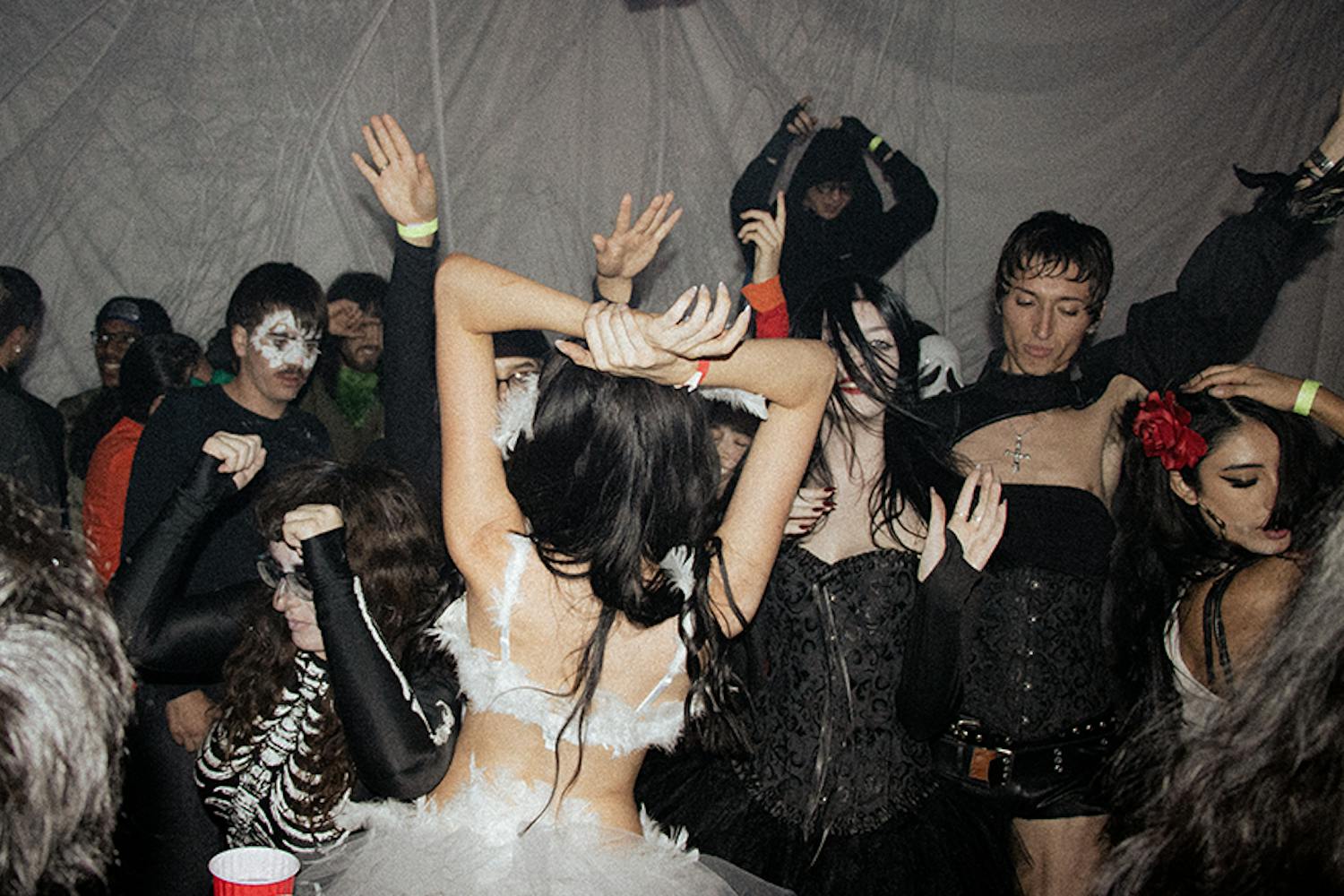Not only did Skins director Chris Eyre honor the Native Americans in his new movie by filming on their reservation, but now he's hand delivering the film with a movie theater to their doorsteps.
"You know the saying, 'service with a smile'?" he says. "That's me."
Eyre, who also directed the art-house sensation Smoke Signals, is certainly proud of his new movie, so proud that he's touring the country's major Indian reservations with a CinaTransformer, a mobile 100-seat movie theater complete with miniature bathrooms and full-service concession stand.
The movie stars Graham Greene (Dances With Wolves) as Mogie, an unemployed drunk, struggling through life on the Pine Ridge Indian reservation in South Dakota. His brother, Rudy (Eric Schweig), is a vigilante cop dealing with his brother's ways and the ways of his tribe.
Eyre sat down with the State Press Magazine to discuss the new film and the effect on its target audience, which doesn't just include Native Americans.
SPM: Why travel with the movie or even a movie theater?
Chris Eyre: We did this because we actually shot the film on the Pine Ridge reservation and because 75 percent of the population there is unemployed, which means there's no hotels, motels and certainly not movie theaters. I felt a responsibility to screen the movie for Pine Ridge because it's about Pine Ridge. Best of all, the screenings are all free.
SPM: So, you feel it's an important movie for Native Americans to see?
CE: It's an important movie for non-Indians to see. For the most part Native Americans — Indians — know who they are and I think everyone else needs to know Indians better. I don't want to see Indians on Walker Texas Ranger or Windtalkers. We're shortchanged by American audiences by how we're portrayed. As an artist, I felt it necessary to portray Indians as we really are. Other than that, the movie is a universal story of love and humanity and a testament to the human spirit. Everyone needs to see it.
SPM: On a Web site about the movie, someone posted an interesting response. Tell me if it's an accurate representation of what you wanted to do. They said Skins "humanizes a stereotype."
CE: I totally agree with that. Mogie is a social untouchable — he's an Indian drunk in America. I wanted to give a face to that icon, to that dysfunctional icon. I wanted to make sure people knew that despite the person's affliction, he was a human being. He was someone's father, uncle, brother and husband. There's a complexity and enigmatic quality to this that America does not know about.
SPM: You were allowed access to Mt. Rushmore for shooting. How much was real and how much special effects?
CE: I'm one of the few people that can say I got to lay on George Washington's head. I went up there with the rangers and scouted the location. At one point, I was looking straight down at the visitors center as visitors were, I'm sure, looking at me. We shot plates of the monument and then painted those in with computers onto the final film. Then we shot the actor on a green screen and then added that in.
SPM: Did the rangers that oversee the monument know how the film was going to end?
CE: The first time we went in there we dropped them a script. The next time we went in there the air was a little different, but to the credit of the park and the government, they didn't censor us. They took a leap of faith with us.
SPM: Alfred Hitchcock was only allowed very limited use of the monument for the finale of North by Northwest. In the end, he was only allowed distant mountain shots, though. Did you take what he did one step further?
CE: Hopefully 10 steps further.
SPM: Did you have to dress Pine Ridge or does it really look as the movie shows?
CE: We didn't dress this movie at all. The house that Mogie lived in is real. It's someone's house. The only question Graham had while we filmed in this house was if the sheets on the bed he was supposed to lay on were production's. He didn't want to lay on someone else's bed, for their sake, not his. Pine Ridge was an important decision. We had to shoot there.
SPM: What hopes do you have for this movie?
CE: I hope this movie makes people love their brother and sisters, and I hope it creates dialogue about Indian country and its relationship with the rest of America. If that happened, then it's a success.
Reach Michael at michael.clawson@asu.edu.
|
Skins, directed by Chris Eyre, starring Graham Greene and Eric Schweig. Opens tomorrow. |



